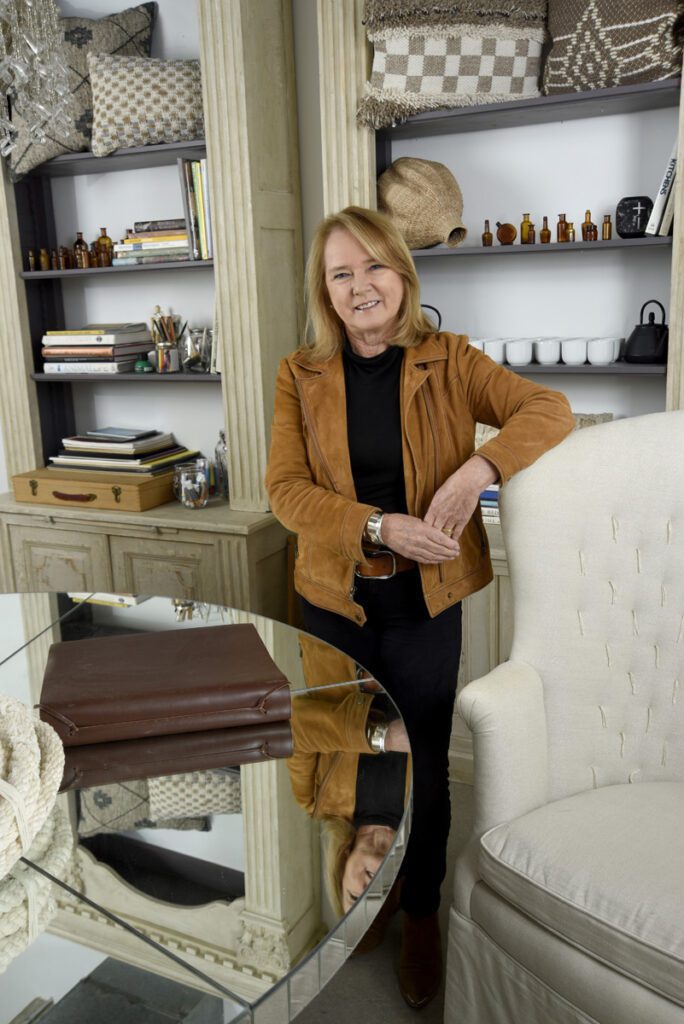Jillian Pritchard Cooke shares ways we can avoid letting our homes make us sick.
Your body can only take so much,” says Jillian Pritchard Cooke, founder of a Buckhead-based company called Wellness Within Your Walls. Cooke speaks from personal experience, as a rare tissue cancer diagnosis she received was found to have been caused by environmental factors, including prolonged exposure to toxicants during the construction and furnishing of dozens of homes during her 40-plus years as an interior designer. This revelation led her to create WWYW, an informational resource group offering guidance to homebuilders and building product manufacturers regarding the dangerous chemicals and other substances commonly found in our homes. “Creating nontoxic, sustainable living environments is vital because our homes impact our health,” says Cooke, who has now been free of cancer for more than 15 years.
What does WWYW do?
Through our four-course educational series, we educate design and building industry professionals and homeowners/buyers about the presence and impact of toxins in our homes, as well as strategies to eliminate them. In addition, we work with architects, builders and inspectors on the certification of homes, both new and existing.
What are some of these toxins we’re living with?
Two hidden toxins commonly found in our homes are formaldehyde, which is used to increase performance and decrease drying time in a number of products, and the synthetic fragrances found in sprays, detergents, soaps and candles. As a population, we believe if something is in the store that it’s safe, but that’s not true.
What are some of the health issues stemming from repeated exposure?
The World Health Organization has warned for more than a decade that chronic, noncommunicable diseases caused by environmental factors are rapidly increasing. Common chronic conditions include cardiovascular disease, cancer, diabetes, obesity, neurocognitive disorders and immune dysfunction.
Have people’s attitudes changed towards their wellness in relation to their living and working spaces, since both spaces are often in the same place these days?
I think air has certainly become top of mind because of the pandemic. Americans already spend 90% of their time indoors, and indoor air can be significantly more polluted and harmful than outdoor air. Even the effects of dust mites, pollen and pet dander multiply during a pandemic since office environments are typically cleaned more frequently than our homes.
How does WWYW’s product certification process work?
It looks at the specifications of various products and what they’re made of. In addition, we consider the life cycle of the product, as well as the manufacturing process and waste products. We are looking for healthy and innovative products that are sustainable. If we have better health, the planet has better health. Can health-friendly and ecosensitive products still be stylish? Absolutely. Our course materials give many examples of natural and sustainable products that are both healthy for humans and the planet while also being beautiful. For example, numerous nontoxic paints, stains and adhesives are on the market today, without limitation of color range or performance. And naturally dyed fabrics come in a stunning range of colors.
What are some other lifestyle changes we can make to ensure a healthier living environment?
1. Make air quality a priority. Assess your ventilation system (including humidification/dehumidification needs), making sure it’s appropriate for your home’s needs. Choose a filter designed to purify specific particulates found in your home, generally MERV 13 or higher. And change your filters as recommended.
2. Check your water source. Environmental Working Group has an easy to- use zip code system (ewg.org/tapwater) for municipal water sources across the country. Determine a filtration system, whether whole-home, at the tap or a pitcher, that addresses the listed contaminants.
3. Avoid fabrics treated with substances that make them wrinklefree, stain-resistant, fire-resistant and water-resistant. These substances are typically chemicals that off-gas and can cause skin irritation.
4. The Japanese tradition of removing your shoes in the house lessens the number of toxins you track in.
Can you share a WWYW success story?
I worked on a project in Luling, Louisiana, near New Orleans, that was downstream of some huge factories. The owner put in a water filtration system, and of the 27 chemicals that had been found in his water, he was able to mitigate 26 of them.
Wellness Within Your Walls
wellnesswithinyourwalls.com
@wellnesswithinyourwalls
Award-winning writer and editor who has penned stories for CNN, Woman's Day, Good Housekeeping, and dozens of other outlets.














